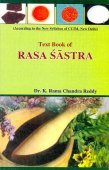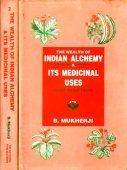Arthashastra, Arthaśāstra, Artha-shastra: 17 definitions
Introduction:
Arthashastra means something in Hinduism, Sanskrit, Marathi, Hindi. If you want to know the exact meaning, history, etymology or English translation of this term then check out the descriptions on this page. Add your comment or reference to a book if you want to contribute to this summary article.
The Sanskrit term Arthaśāstra can be transliterated into English as Arthasastra or Arthashastra, using the IAST transliteration scheme (?).
Alternative spellings of this word include Arthshastra.
In Hinduism
Purana and Itihasa (epic history)
Source: Cologne Digital Sanskrit Dictionaries: The Purana IndexArthaśāstra (अर्थशास्त्र).—One of the 18 vidyas1 Science of Polity pleaded by Indra in extenuation of his destruction of Diti's garbha2 No regard for the śāstra during Pṛthu's reign: Budha learned in;3 to be learnt by a prince.4
- 1) Brahmāṇḍa-purāṇa II. 31. 23; 35. 89; Vāyu-purāṇa 58. 23; 61. 79.
- 2) Matsya-purāṇa 7. 63; 10. 32; Viṣṇu-purāṇa III. 6. 28.
- 3) Matsya-purāṇa 24. 2.
- 4) Matsya-purāṇa 144. 23; 220. 2.

The Purana (पुराण, purāṇas) refers to Sanskrit literature preserving ancient India’s vast cultural history, including historical legends, religious ceremonies, various arts and sciences. The eighteen mahapuranas total over 400,000 shlokas (metrical couplets) and date to at least several centuries BCE.
Ayurveda (science of life)
Rasashastra (Alchemy and Herbo-Mineral preparations)
Source: CBSE: Chemistry in IndiaArthaśāstra (अर्थशास्त्र).—Kauṭilya’s Arthaśāstra is a well-known text of governance and administration authored probably in the 3rd or 4th century BCE , during the Mauryan era. It has much data on prevailing chemical practices, in particular a long section on mines and minerals (including metal ores of gold, silver, copper, lead, tin and iron). It also discusses the various characteristics of precious stones (pearl, ruby, beryl, etc.), details of fermented juices (from sugarcane, jaggery, honey, jambu, jackfruit, mango, etc.), and oil extraction.

Āyurveda (आयुर्वेद, ayurveda) is a branch of Indian science dealing with medicine, herbalism, taxology, anatomy, surgery, alchemy and related topics. Traditional practice of Āyurveda in ancient India dates back to at least the first millenium BC. Literature is commonly written in Sanskrit using various poetic metres.
Dharmashastra (religious law)
Source: Knowledge Traditions & Practices of India: Education: Systems & PracticesArthaśāstra (अर्थशास्त्र) refers to the “science of polity” and represents one of the nine divisions of the Paurūṣeya classification of Śāstra knowledge; all part of the ancient Indian education system, which aimed at both the inner and the outer dimension of a person.

Dharmashastra (धर्मशास्त्र, dharmaśāstra) contains the instructions (shastra) regarding religious conduct of livelihood (dharma), ceremonies, jurisprudence (study of law) and more. It is categorized as smriti, an important and authoritative selection of books dealing with the Hindu lifestyle.
Vastushastra (architecture)
Source: Knowledge Traditions & Practices of India: Architecture (1): Early and Classical ArchitectureArthaśāstra (अर्थशास्त्र) is the name of a Sanskrit word partly dealing with the “science of architecture” (vāstuvidyā).—Kauṭilya’s Arthaśāstra (c. 300 BCE) deals with town planning, fortifications and other structures of civil nature.

Vastushastra (वास्तुशास्त्र, vāstuśāstra) refers to the ancient Indian science (shastra) of architecture (vastu), dealing with topics such architecture, sculpture, town-building, fort building and various other constructions. Vastu also deals with the philosophy of the architectural relation with the cosmic universe.
Arthashastra (politics and welfare)
Source: Knowledge Traditions & Practices of India: Society State and Polity: A SurveyArthaśāstra (अर्थशास्त्र) (4th century BCE) by Kauṭilya is one of the most influential treatises of political science. It visualizes a huge bureaucratic structure, a complex tax structure, and an intricate intelligence system for effective governance. Arthaśāstra is divided into sixteen books dealing with virtually every topic concerned with the running of a state: taxation, law, diplomacy, military strategy, economics, bureaucracy etc. It advocates rational ethics in the conduct of the affairs of the state and emphasises the codification and uniformity of the law throughout the state.

Arthashastra (अर्थशास्त्र, arthaśāstra) literature concerns itself with the teachings (shastra) of economic prosperity (artha) statecraft, politics and military tactics. The term arthashastra refers to both the name of these scientific teachings, as well as the name of a Sanskrit work included in such literature. This book was written (3rd century BCE) by by Kautilya, who flourished in the 4th century BCE.
Vaishnavism (Vaishava dharma)
Source: Pure Bhakti: Bhagavad-gita (4th edition)Arthaśāstra (अर्थशास्त्र) refers to “scriptures on economic development”. (cf. Glossary page from Śrīmad-Bhagavad-Gītā).

Vaishnava (वैष्णव, vaiṣṇava) or vaishnavism (vaiṣṇavism) represents a tradition of Hinduism worshipping Vishnu as the supreme Lord. Similar to the Shaktism and Shaivism traditions, Vaishnavism also developed as an individual movement, famous for its exposition of the dashavatara (‘ten avatars of Vishnu’).
Languages of India and abroad
Marathi-English dictionary
Source: DDSA: The Aryabhusan school dictionary, Marathi-Englisharthaśāstra (अर्थशास्त्र).—n The law of secularity, as con- trasted from dharmaśāstra, the law of reli- gion. In recent literature it has ac- quired the sense of the Science of economics, political economy.
Marathi is an Indo-European language having over 70 million native speakers people in (predominantly) Maharashtra India. Marathi, like many other Indo-Aryan languages, evolved from early forms of Prakrit, which itself is a subset of Sanskrit, one of the most ancient languages of the world.
Sanskrit dictionary
Source: DDSA: The practical Sanskrit-English dictionaryArthaśāstra (अर्थशास्त्र).—
1) the science of wealth (political economy).
2) science of polity, political science, politics; अर्थशास्त्रविशारदं सुधन्वानमुपाध्यायम् (arthaśāstraviśāradaṃ sudhanvānamupādhyāyam) Rām.2.1.14. Daśakumāracarita 12; इह खलु अर्थशास्त्रकारास्त्रिविधां सिद्धिमुपवर्णयन्ति (iha khalu arthaśāstrakārāstrividhāṃ siddhimupavarṇayanti) Mu.3; °व्यवहारिन् (vyavahārin) one dealing with politics, a politician; Mu.5.
3) science giving precepts on general conduct, the science of practical life; Pañcatantra (Bombay) 1.
Derivable forms: arthaśāstram (अर्थशास्त्रम्).
Arthaśāstra is a Sanskrit compound consisting of the terms artha and śāstra (शास्त्र).
Source: Cologne Digital Sanskrit Dictionaries: Shabda-Sagara Sanskrit-English DictionaryArthaśāstra (अर्थशास्त्र).—n.
(-straṃ) The science of polity or moral and political government. E. artha possession, property, and śāstra institutes of a science.
Source: Cologne Digital Sanskrit Dictionaries: Cappeller Sanskrit-English DictionaryArthaśāstra (अर्थशास्त्र).—[neuter] manual of practical life.
Source: Cologne Digital Sanskrit Dictionaries: Aufrecht Catalogus CatalogorumArthaśāstra (अर्थशास्त्र) as mentioned in Aufrecht’s Catalogus Catalogorum:—Quoted by Rāyamukuṭa.
Source: Cologne Digital Sanskrit Dictionaries: Monier-Williams Sanskrit-English DictionaryArthaśāstra (अर्थशास्त्र):—[=artha-śāstra] [from artha] n. a book treating of practical life (cf. -vidyā above) and political government (cf. -cintana above), [Mahābhārata etc.]
Source: Cologne Digital Sanskrit Dictionaries: Yates Sanskrit-English DictionaryArthaśāstra (अर्थशास्त्र):—[artha-śāstra] (straṃ) 1. n. Ethics, politics.
[Sanskrit to German]
Sanskrit, also spelled संस्कृतम् (saṃskṛtam), is an ancient language of India commonly seen as the grandmother of the Indo-European language family (even English!). Closely allied with Prakrit and Pali, Sanskrit is more exhaustive in both grammar and terms and has the most extensive collection of literature in the world, greatly surpassing its sister-languages Greek and Latin.
Hindi dictionary
Source: DDSA: A practical Hindi-English dictionaryArthaśāstra (अर्थशास्त्र) [Also spelled arthshastra]:—(nm) Economics; ~[śāstrī] an economist; ~[śāstrīya] economic.
...
Kannada-English dictionary
Source: Alar: Kannada-English corpusArthaśāstra (ಅರ್ಥಶಾಸ್ತ್ರ):—
1) [noun] the science of political institutions or of the principles organisation, and methods of government; political science.
2) [noun] an ancient treatise by Kauṭilya on political science.
3) [noun] the science that deals with the production, distribution, and consumption of wealth, and with the various related problems of labour, finance, taxation, etc.; economics.
Kannada is a Dravidian language (as opposed to the Indo-European language family) mainly spoken in the southwestern region of India.
See also (Relevant definitions)
Partial matches: Shastra, Artha.
Starts with: Arthashastrajna, Arthashastraka.
Ends with: Brihat-arthashastra, Drishtarthashastra, Shabdarthashastra, Sukshma-arthashastra.
Full-text (+270): Dandaniti, Barhaspatya, Ashtadashavidya, Kautilya, Vivadapada, Brihat-arthashastra, Taila, Atyaya, Surashtra, Meshashringa, Kustumaburu, Maruvaka, Coraka, Gaura, Ajaji, Shringibera, Kiritatikta, Jivajivaka, Drishtarthashastra, Prabhushakti.
Relevant text
Search found 89 books and stories containing Arthashastra, Artha-śāstra, Artha-sastra, Artha-shastra, Arthaśāstra, Arthasastra, Arthaśastra; (plurals include: Arthashastras, śāstras, sastras, shastras, Arthaśāstras, Arthasastras, Arthaśastras). You can also click to the full overview containing English textual excerpts. Below are direct links for the most relevant articles:
Kamashastra Discourse (Life in Ancient India) (by Nidheesh Kannan B.)
5. Concept of Artha (Introduction) < [Chapter 4 - Positioning Kāma among the Puruṣārthas]
9. Courtesan in Arthaśāstra < [Chapter 1 - Rise of Urbanization and Luxury Life in India]
6. Tradition (behind the formation of Arthaśāstra) < [Chapter 4 - Positioning Kāma among the Puruṣārthas]
The Matsya Purana (critical study) (by Kushal Kalita)
Part 2 - Fort (durga) architecture in the Matsyapurāṇa < [Chapter 7 - Art and Architecture in the Matsyapurāṇa]
Part 2 - The components of the State (the saptāṅga theory) < [Chapter 6 - Polity in the Matsyapurāṇa]
Plotical Aspects in the Purāṇas (Introduction) < [Chapter 6 - Polity in the Matsyapurāṇa]
Kautilya Arthashastra (by R. Shamasastry)
Chapter 1 - The Life of a King < [Book 1 - Concerning Discipline]
Shishupala-vadha (Study) (by Shila Chakraborty)
Daṇḍa-vyūha (Staff array) < [Chapter 6 - Principles of Warfare]
Tax system according to Kauṭilya < [Chapter 5 - Policies of taxation]
Sandhi (treaty) (Introduction) < [Chapter 3 - Six fold policies of a king (Ṣāḍguṇya)]
Settlement in Early Historic Ganga Plain (by Chirantani Das)
Part 1 - Urban model of Rājagṛha < [Chapter II - Origin and Function of Rājagṛha as the seat of Monarchy]
Part 9 - Fortification (defence and fortification of Rājagṛha) < [Chapter I - The Case Study of Rājagṛha]
Part 10 - Water-Drainage System (regarding Rājagṛha) < [Chapter I - The Case Study of Rājagṛha]
Vastu-shastra (2): Town Planning (by D. N. Shukla)
Villages in ancient Indian town-planning < [Chapter 2 - Villages, Towns and Forts in General]
Related products


